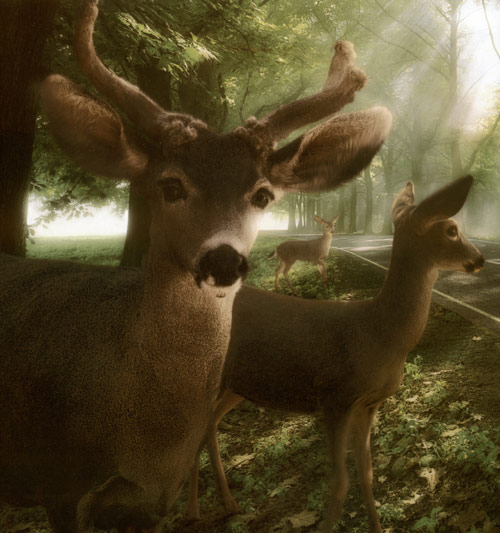| Mögliche
Nebenwirkungen von Asim Chughtai // English
version // Bild 1
2
Up! (I) und Up! (II), beide 2002 Drei junge Männer tun sich zusammen und bilden eine Gruppe. Die Friedensdividende und die blühendenden Landschaften sollen eingestrichen und erkundet werden. Die Künstlergruppe nennt sich programmatisch BEWEGUNG und lässt die historisch bereits erledigten Ansprüche der modernen Avantgarden noch einmal anklingen. Zwischen diesen beiden Polen, Anspruch und Programm, wird sich in der Folge das Aktionsfeld konkretisieren. Die implizite Ironie des Namens gewährt, Abwehr fremder als auch Unterpfand eigener Ansprüche zu sein. Vielleicht ist es einer männerbündischen Überspanntheit, vielleicht der gesellschaftlichen Regression im Deutschland der 90 er Jahre geschuldet, Erfolg nicht als Ziel, sondern als Beschluss zu proklamieren. Jedenfalls lässt sich schon zu Beginn, mit der Namenswahl, als das Schiff vom Stapel lief, ein Moment festmachen, das immer wieder Anknüpfungspunkt sein wird für Projekte und Interventionen. Unsere Angst, 2000 Wollte man ein Schlagwort der vergangenen Dekade für das bemerkenswerte Tun dieser kleinstmöglichen Gruppe bemühen, das Wort Simulation könnte sich in diesem speziellen Falle über seine Hinzuziehung nun wahrlich nicht beschweren. Denn gerade die Simulation ermöglicht eine Teilhabe an und Reflektion auf eine Gegenwart, die sich in ihren bewussten Momenten als das Nicht-Authentische zu erkennen gibt. Ohne diesen bewusst positiven Bezug auf die Simulation, ließe sich das Agieren der BEWEGUNG nur mit einem Vokabular beschreiben, das im Subsystem der klinischen Psychiatrie der Beschreibung ganz spezieller Pathologien vorbehalten ist. Mögliche Nebenwirkungen: Sie werden beim Lesen dieses Buches auf dieses oder jenes Faktum wiederholt aufmerksam gemacht werden. Auch wenn es oft als Fragestellung eine ganz besondere Dringlichkeit beanspruchen mag: Redundanz zu vermeiden, erwies sich nicht als Option; bezichtigen wir statt dessen ruhig die etwas dünne und dumme empirische Basis, mit der der Realismus der BEWEGUNG NURR zu kämpfen hat, wenn er die Gesellschaften diesseits und jenseits der Kunst ins Visier nimmt.
Possible Side Effects by Asim
Chughtai //
tranlated by
Laura Schleussner // Up! (I) and Up! (II), both 2002 Three lads get together and form a group. The dividends of peace and blooming landscapes are to be pocketed and explored. The artists’ group programmatically calls itself a »movement« [BEWEGUNG] and re-echoes the claims of modern avant-gardes which history has already put to rest. Between these two poles – pretension and program – the field of operation unfolds. The implicit irony of the name acts as both a defence against external demands and as a token of their own ambitions. Such proclamations, in which success is not a goal but a decree, may well be attributed to the nervous excitement of male bonding or perhaps to societal regression in 1990s Germany. In any case, starting from the very beginning, the christening moment when the ship was launched, a momentum was established that has subsequently provided a constant point of departure for projects and interventions. Unsere Angst [Our Fear], 2000 If one wanted to find a slogan or buzzword of the previous decade for the remarkable activities of this smallest possible group; the word »simulation« could not really complain about being enlisted in this particular case. For simulation is precisely what offers an opportunity to participate in and reflect on a present that reveals itself in its conscious moments as inauthentic. Without this deliberately positive reference to simulation, the activities of the BEWEGUNG NURR could only be described in a vocabulary reserved for very special pathologies in the subsystem of clinical psychiatry. Possible side effects: your attention will be repeatedly drawn to this or that fact in the course of reading this book. Even if the formulation as a question has given it particular urgency: avoiding redundancy was not an option. Instead we should blame the rather thin and stupid empirical basis against which the realism of the BEWEGUNG NURR has to struggle, when they set their sight on the societies within and beyond art. |
||

